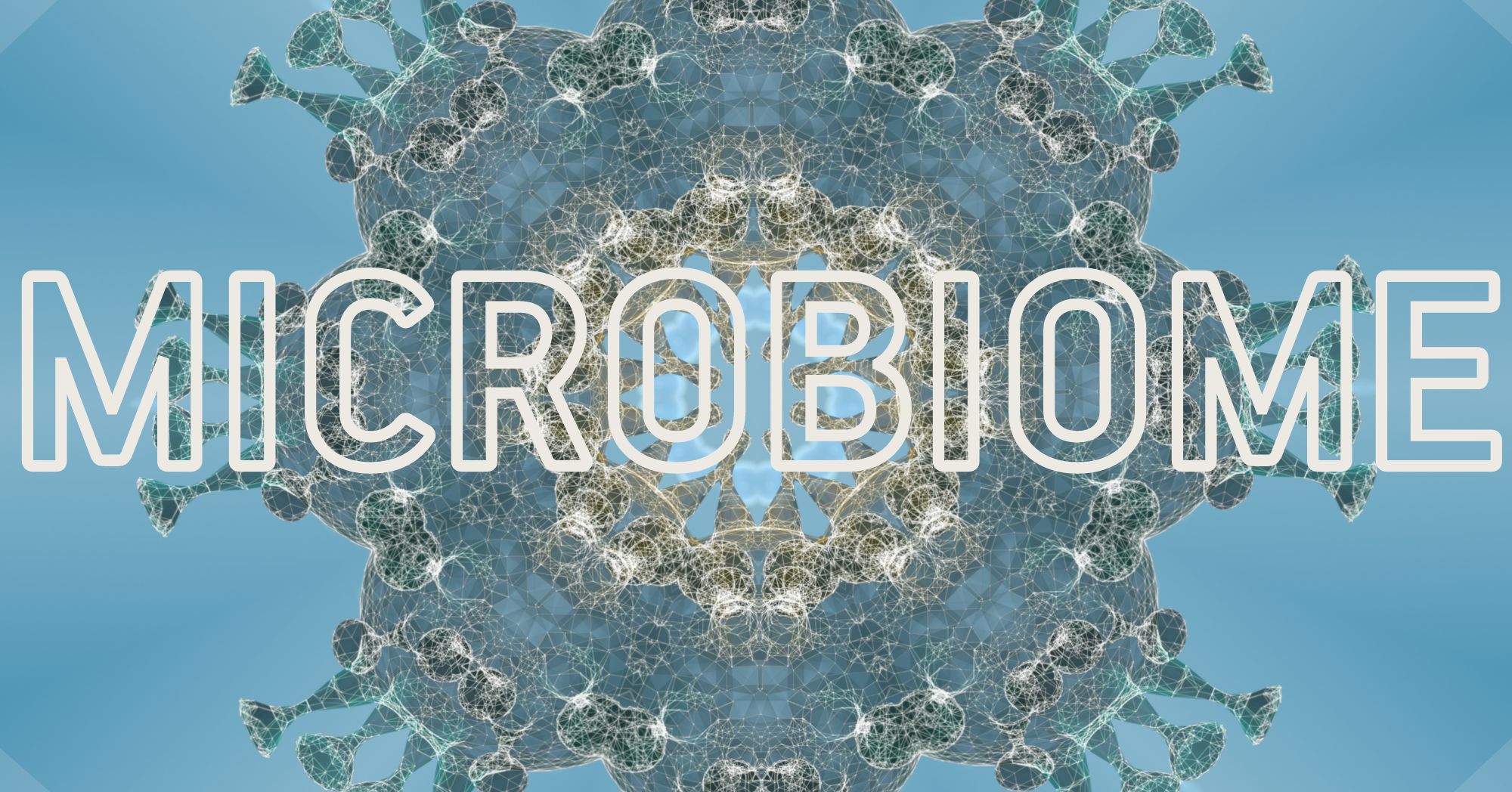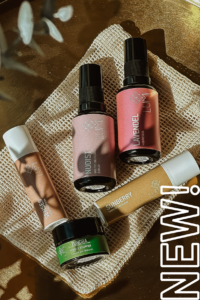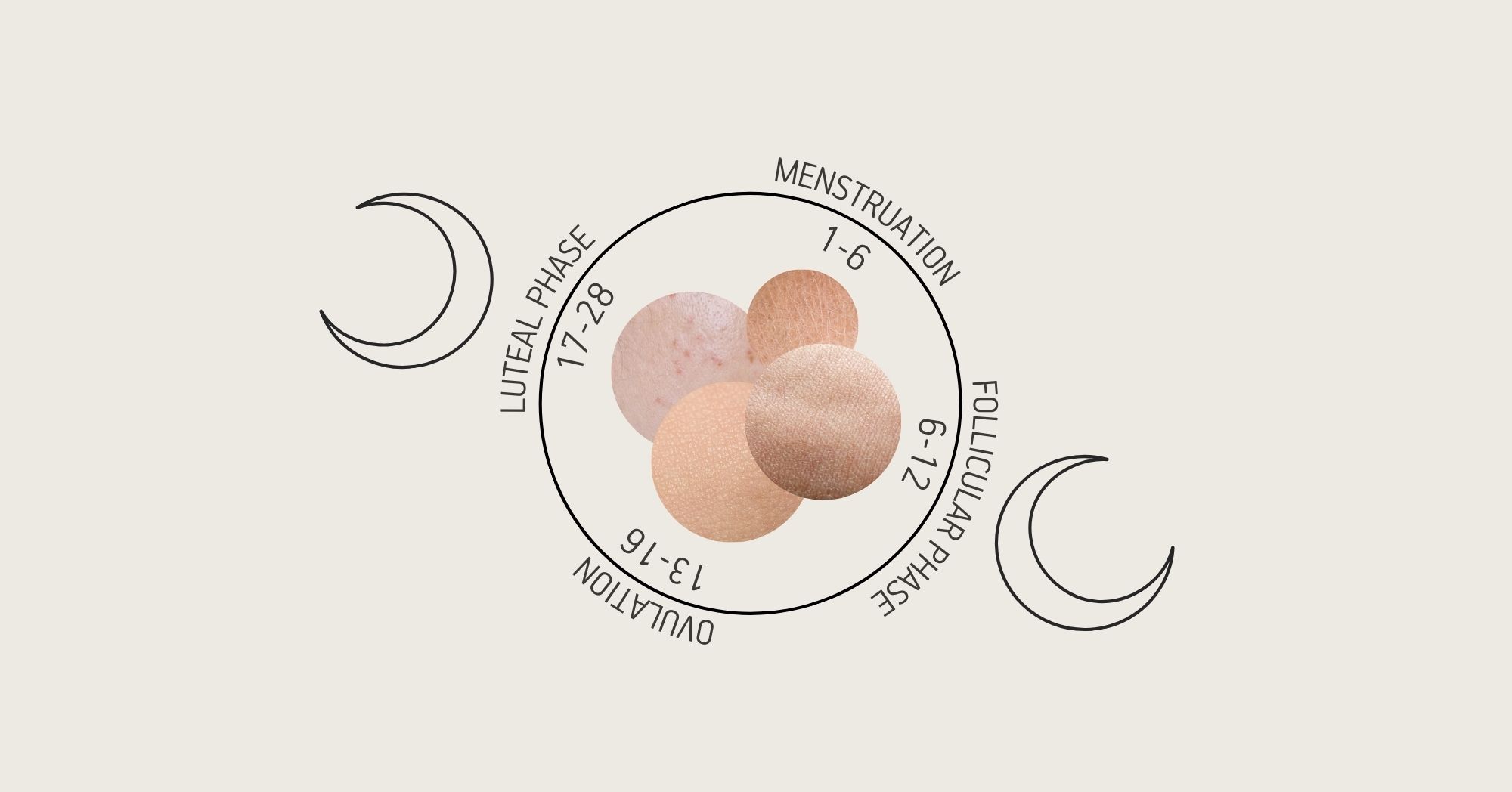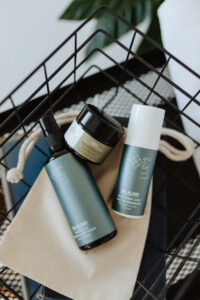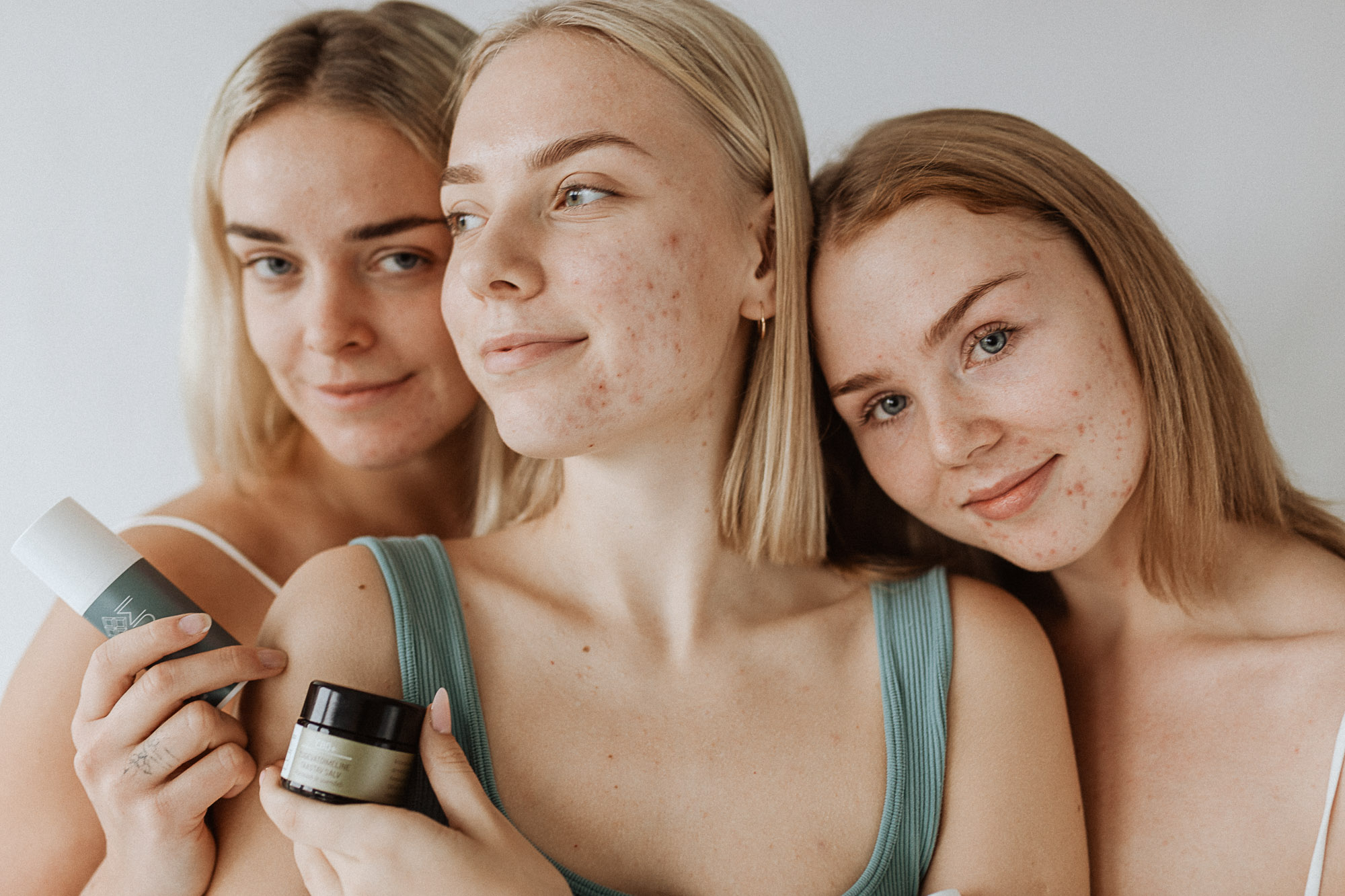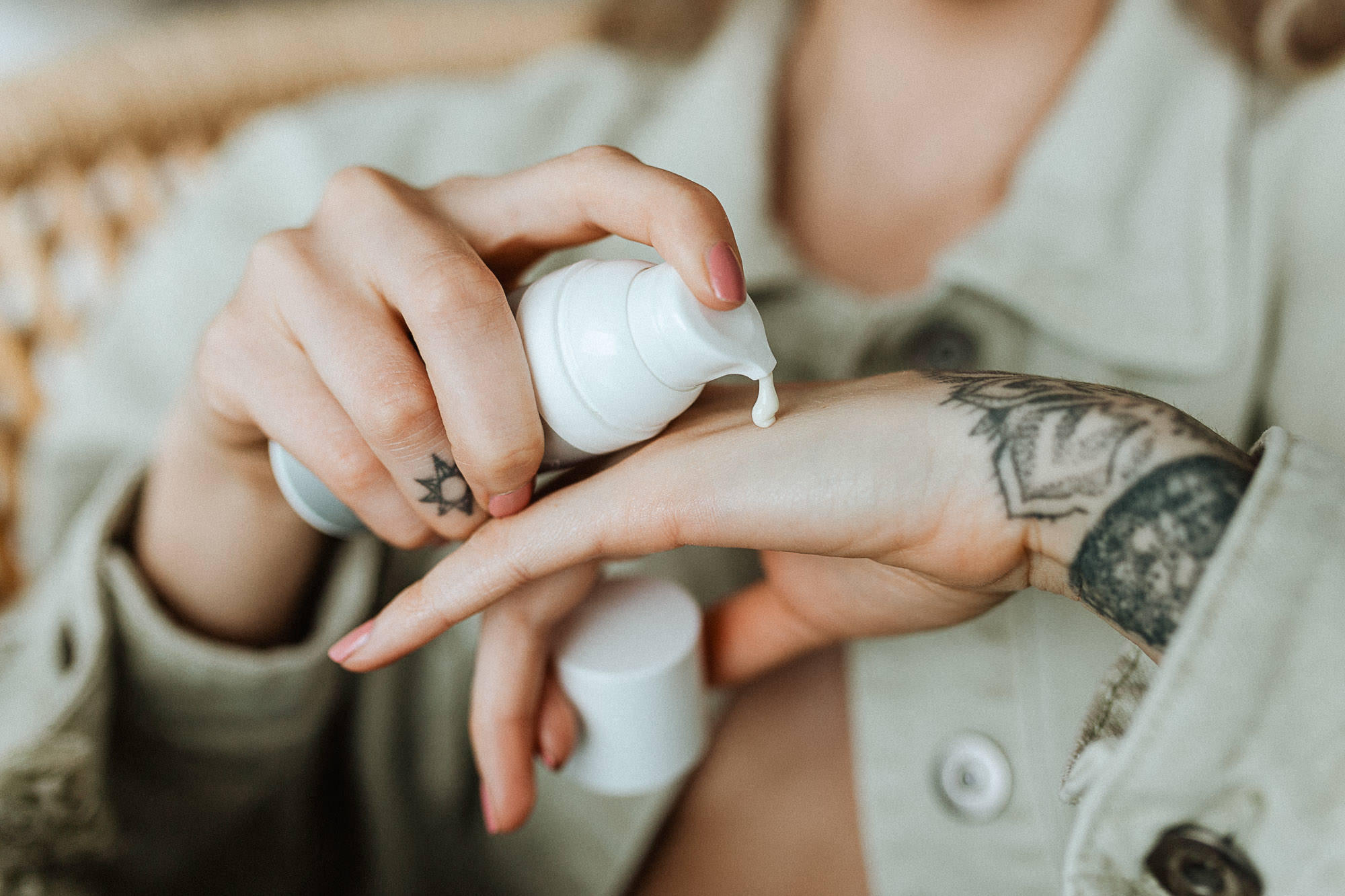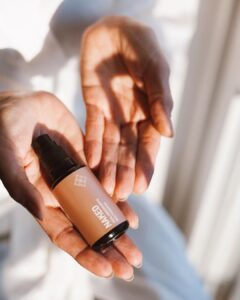
“O, Sunshine! The most precious gold to be found on earth.”
– Roman Payne
The long-awaited return of sunshine and warm weather is here, filling us all with new energy, ideas, and a sense of spontaneity. Who doesn’t love being bathed in those golden rays, and the luscious tan that surely follows?
Of course, it will be news to no one that those benefits come with considerable risk. UV radiation from the sun can cause a host of issues, ranging from sunburn to premature aging, and even some forms of cancer. The topic is often publicly discussed, but usually from a rather one-sided position, where the dangers of sun exposure are espoused at length and other health and environmental concerns are shunned to the side. Little time is given to exploring the dangers of insufficient exposure to the sun, or the potential damage to our bodies and the planet that sunscreen can cause.
Here at LUMI, we think that’s a problem. As we pride ourselves on our curiosity, we’re keen to find out what’s going on for ourselves and gain a more balanced view of such a multi-layered discussion. So, we decided it’s high time that we delved into the science for ourselves, to find out whether we humans really need to spend all our summertime hidden in the shade and wrapped up from head to toe! Join us as we explore humanity’s bittersweet relationship with the sun.
The dangers of a lack of sunlight
Insufficient exposure to sunlight has become a major public health issue. Research suggests that insufficient sun exposure may be responsible for a startling 340,000 deaths in the United States and 480,000 deaths in Europe per year, leading to increased incidence of a wide range of medical conditions, including several types of cancer, autoimmune diseases, diabetes, Alzheimer’s disease, and even autism.
Vitamin D has long been posited as the major factor behind the benefits of sun exposure, but studies attempting to replicate sun exposure via oral Vitamin D supplements do not show similar preventative effects. These findings suggest that there are innate physiological benefits to humans from sun exposure that cannot be easily gained from other sources.
One such benefit is hypothesized to be UVA radiation increasing the release of nitric oxide from the skin, thereby lowering blood pressure and the risk of cardiovascular disease complications. Even moderate amounts of sun are associated with a reduction in stress, increased mental capacity, and an improved general sense of well-being, as well as aiding in alleviating various skin issues, such as atopic dermatitis and psoriasis.
A 2014 Swedish study found that completely avoiding sunlight exposure significantly increased mortality risk in adults, with a risk factor similar to that of being a regular smoker. Surprisingly, particularly considering prevailing media narratives, the study found no evidence of increased skin cancer risk in those who intentionally tanned compared to those who did not.
Add all of this evidence together and it becomes clear that human bodies, thanks to millions of years of evolutionary processes, need sunlight to optimally function.
The often-ignored drawbacks of sunscreen
The global sunscreen market was estimated to be worth around $8.5 billion in 2019. Every day, tens of millions of people use creams, sprays, and lotions containing UV filters – specific chemicals added to these products to absorb or block radiation from the sun.
Unfortunately, UV filters are not biodegradable, and many sewage treatment plants are ill-equipped to deal with them properly. As a result, UV filters reach natural environments in ever-increasing numbers. Up to 14,000 tons of SPF cream ends up in our oceans every year and is deposited in a variety of aquatic environments, including coral reefs.
Because UV filters are not biodegradable, the compounds eventually end up inside the bodies of living organisms; originally in microscopic organisms, before moving up through the food chain into every animal and plant in the environment. This can cause a host of problems for animals, including humans, and can be catastrophic for marine life in particular.
For example, exposure to oxybenzone – a common sunscreen ingredient – is extremely detrimental and potentially fatal to coral reefs, which are home to more than a quarter of worldwide fish species. The destruction of marine environments can have a massive impact on the entire planet – 50-80% of the world’s oxygen is produced by ocean algae.
Substances originating in sunscreen have been detected in human brains, breast milk, and the placenta, proving that they can pass through organic barriers and be absorbed by the body. These substances can remain within our bodies for weeks after sunscreen use and can have substantial detrimental effects, such as disrupting the normal functioning of the endocrine system.
There has been considerable recent controversy about the use of nanotechnology in sunscreen products, particularly those containing titanium oxide. The advantage of nanotechnological sun cream is that it prevents the appearance of a visually unpleasant white layer over the surface of the skin. Unfortunately, the smaller the molecule size of a substance, the greater the risk of it penetrating the body. Several studies have warned of nanoscopic titanium particles’ ability to breach human skin and enter the bloodstream, where they may be activated by UVA radiation and induce DNA mutations that can develop into cancer.
Perhaps surprisingly, after the widespread introduction of sunscreen creams, incident rates of skin cancer actually rose. This has been attributed to sunscreen users relying too much on the protective effect of creams and thereby inadvertently exposing themselves to more UV radiation than previously, as well as sunburn-inhibiting effects of creams stopping skin from reddening, which gives sunscreen users an inaccurate idea of how much sun exposure they have actually had.
It is imperative to be extremely careful when using sunscreen on small children. For babies under six months, it is recommended to instead use hats, protective clothing, and shade from the intense sun rather than using creams of any kind. For children between six months and six years, it is recommended that sunscreen is used sparingly and only on areas that cannot be covered with clothes. It is a common misperception that SPF cream alone is enough to protect children’s skin from sunlight, whilst in reality, other forms of skin care are just as necessary for skin to properly cope with sun exposure and other environmental pollutants.
How does our skin try to protect itself from sun damage?
Over millions of years, human skin has evolved in daily exposure to sunlight, and by doing so, has naturally developed a number of different defense mechanisms to fight the mutagenic effects of solar radiation.
As regular LUMI customers and readers will know, we are in constant awe of the natural marvel that is our skin microbiome. As with so many other dangers we might face, the skin microbiome is our first line of defense against UV radiation. Microorganisms on the surface of the skin react to UV radiation and begin to produce substances and pigments that are protective and beneficial, including melanin, which assists our own internal melanocyte production of the same compounds, meaning they are less overworked, resulting in a reduction in pigmentation spots and a more even, radiant complexion.
As well as the microbiome, our skin has other defense mechanisms to protect against UV radiation. These include the ability to thicken the top layer of skin, the ability to repair DNA, apoptosis (a process of cell death that allows the body to control the total number of cells present), the production of antioxidant enzymes, and skin pigmentation (darkening of the skin).
Our skin’s natural protection against UV radiation is usually sufficient, provided the skin is in good health and is exposed to the sun in moderation. Long-term or excessive exposure to UV radiation can cause the deterioration of skin structure and function – a form of premature skin aging known as photoaging.
Photoaged skin is characterized by fine lines and wrinkles, dryness, hyperkeratosis (increased outer skin layer thickness), pigmentation spots, loose skin from the weakening of connective tissue, and in some cases, precancerous and cancerous lesions. Changes in the skin’s microcirculation (blood flow) can cause permanent dilation of blood vessels, which manifests itself in the form of telangiectasias (dilated intradermal veins) and general skin redness. Photoaging is caused by both UVA and UVB rays.
As a LUMI fan, you can breathe easily, and safely in the knowledge that our products keep the skin’s microbiome in optimal condition. LUMI products are #microbiota respectful, meaning they support and nourish the microorganisms of the skin, which play such an important role in maintaining, supporting, and supplementing your largest organ.
Antioxidants – a therapeutic approach to preventing inflammatory skin damage!
When our skin’s own defense systems are depleted, premature aging of the skin often quickly follows. To fight oxidative damage and protect the skin, LUMI has developed a variety of incredibly effective all-natural antioxidant serums and creams.
Natural antioxidants such as vitamins C and E play a key role in caring for the skin. When these vitamins are mixed together, their beneficial properties are enhanced. In addition to a host of other benefits, the combination of vitamins C and E provide photoprotection, increases collagen synthesis, accelerates the skin’s renewal process, and increases the skin’s resistance to oxidative stress. You can find this powerful pairing in LUMI’s Superbloom Vitamin C Night Serum – by using it before and during the onset of seasonal sun, you’re doing your skin a big favor and providing some of the essential compounds it needs to keep you healthy.
NAKED Hyaluronic Acid Serum is another summer superfood for the skin! In addition to its deep moisturizing effect (dehydrated skin is much more susceptible to burning), the serum contains prebiotics that repopulates the skin microbiome, vitamin B3 to protect skin cells, and algae extract, which redistributes pigmentation in existing hyperpigmentation spots and prevents the formation of new spots. The serum’s fireweed hydrosol also helps increase the skin’s own defenses.
Although UV radiation is the most prominent and aggressive environmental factor to consider when stepping outside, air pollution can also cause significant damage to the skin. Research has shown that urban pollution and UV radiation can have harmful interactions on the surface of the skin. For example, polyaromatic hydrocarbons (found in cigarette smoke) can be activated by UV radiation, causing oxidative stress and damaging both skin cell structure and DNA.
An SPF product alone does not protect against environmental pollution! But never fear, because LUMI has the solution – Sunberry Day Serum, which provides additional natural protection for your skin against solar radiation, blue light, and urban pollution. Milk thistle oil found in the serum protects skin from oxidative stress caused by external environmental factors (including UV radiation), as well as slows down aging and glycation processes at the cellular level. The raspberry seed oil found in Sunberry Day Serum (as well as our La-Laa Baby Oil) offers protection against both UVA and UVB rays at comparable levels to titanium dioxide. Whilst these products cannot protect you from extended bouts of extreme sunlight, e.g. those who are committed to ‘frying in the sun’, these products can give you the opportunity when exposed to moderate sunlight to avoid synthetic sunscreens, including those with carcinogenic ingredients.
The Nudist Hyaluronic Acid Serum, with its pleasant summertime scent, deeply moisturizes skin and offers additional protection against UV radiation thanks to the inclusion of fireweed hydrosol. The lemon balm and mint water used in the product also have a wonderful soothing effect on the skin!
A healthy diet that includes a variety of vitamins and micronutrients helps to restore and maintain your gut microbiome, which in turn helps maintain healthy skin and provide your body additional protection. LUMITEEK nutritional supplements can help support a healthy diet and ensure your body is getting exactly what it needs.
LUMITEEK Cellular Health Selenium is another research-backed option for protecting your skin from UV damage. Studies suggest that orally administered doses of the antioxidant can potentially act as an adjuvant for sunscreen products, increasing their efficacy and protecting the skin from short and long-term UV-induced oxidative damage.
No matter whether the sun is out, probiotics are always a great choice for supporting your body and microbiome. A diverse gut microbiome provides the basis for a diverse skin microbiome, which in turn helps strengthen skin and bolsters its ability to protect against UV radiation.
High SPF creams are NOT the only solution!
Here at LUMI, we believe that the most essential sun-care step is always keeping your skin healthy! By looking after your skin all year round, supporting its microbiome, and keeping it topped up with antioxidants, you’re ensuring that your skin is in the best possible shape to defend itself come the sunny season. When the sun shines, don’t panic – embrace the warmer weather and let sensible decision-making guide your course of action.
LUMI is built on three principles – natural ingredients, top science, and balance in all things. A balanced, moderate amount of sun is good for your body and mind. If you have delicate skin or have to deal with intense sun exposure, we recommend combining antioxidants, maximal hydration, and a natural SPF cream with a moderate amount of non-nano zinc oxide (please choose coral-safe products!). By doing so, you can keep yourself safe, enjoy the most of the warmer months, and do your best for your skin and the planet.
Perfection!
LUMI
References
1. Alfredsson, L., Armstrong, B. K., Butterfield, D. A., Chowdhury, R., de Gruijl, F. R., Feelisch, M., Garland, C. F., Hart, P. H., Hoel, D. G., Jacobsen, R., Lindqvist, P. G., Llewellyn, D. J., Tiemeier, H., Weller, R. B., & Young, A. R. (2020). Insufficient Sun Exposure Has Become a Real Public Health Problem. International journal of environmental research and public health, 17(14), 5014. https://doi.org/10.3390/ijerph17145014
2. Couselo-Rodríguez, C., González-Esteban, P. C., Diéguez Montes, M. P., & Flórez, Á. (2022). Environmental Impact of UV Filters. Impacto de los filtros ultravioleta en el entorno natural. Actas dermo-sifiliograficas, 113(8), 792–803. https://doi.org/10.1016/j.ad.2022.03.010
3. Farris, P. K., & Valacchi, G. (2022). Ultraviolet Light Protection: Is It Really Enough?. Antioxidants (Basel, Switzerland), 11(8), 1484. https://doi.org/10.3390/antiox11081484
5. Lindqvist, P. G., Epstein, E., Landin-Olsson, M., Ingvar, C., Nielsen, K., Stenbeck, M., & Olsson, H. (2014). Avoidance of sun exposure is a risk factor for all-cause mortality: results from the Melanoma in Southern Sweden cohort. Journal of internal medicine, 276(1), 77–86. https://doi.org/10.1111/joim.12251
7. Patra, V., Gallais Sérézal, I., & Wolf, P. (2020). Potential of Skin Microbiome, Pro- and/or Pre-Biotics to Affect Local Cutaneous Responses to UV Exposure. Nutrients, 12(6), 1795. https://doi.org/10.3390/nu12061795
8. Skotarczak, K., Osmola-Mańkowska, A., Lodyga, M., Polańska, A., Mazur, M., & Adamski, Z. (2015). Photoprotection: facts and controversies. European review for medical and pharmacological sciences,19(1), 98–112.
9. Taylor, S.C. (2005). Photoaging and Pigmentary Changes of the Skin. In: Burgess, C.M. (eds) Cosmetic Dermatology. Springer, Berlin, Heidelberg. https://doi.org/10.1007/3-540-27333-6_3
10. Yu, H., Xia, Q., Yan, J., Herreno-Saenz, D., Wu, Y. S., Tang, I. W., & Fu, P. P. (2006). Photoirradiation of polycyclic aromatic hydrocarbons with UVA light – a pathway leading to the generation of reactive oxygen species, lipid peroxidation, and dna damage. International journal of environmental research and public health, 3(4), 348–354. https://doi.org/10.3390/ijerph2006030045
